21 Wild Animals in Sri Lanka [Wildlife in Sri Lanka]
Want to know more about the wildlife in Sri Lanka?
Discover 21 wild animals in Sri Lanka in this post, as well as interesting facts about them. 🇱🇰
Learn All About Sri Lankan Animals
Ready to learn all about Sri Lankan animals?
I’ve always been fascinated by animals, and by how they can be so different from one country to another. In this guide, we’ll focus on the many animals Sri Lanka has on the land, in the sky, and underwater.
I’ve split the guide into 4 categories:
- Native animals from Sri Lanka
- Endangered animals of Sri Lanka
- What is the national animal in Sri Lanka?
- How many animals native to Sri Lanka?
Let’s dive in right away with our first category!
Native Animals from Sri Lanka
Sri Lanka is an Asian island country located in the southern part of the continent, off the coast of the Indian subcontinent. Its history goes back 125,000 years, was and still is a very important part of the Silk Road, is known for its luxury goods and spices, and used to be a British colony. It is surrounded by the Indian Ocean and shares maritime borders with India and the Maldives, and while its legislative capital is Sri Jayawardenepura Kotte, its capital and largest city is Colombo, which counts more than 752,000 inhabitants (but more than 5,648,000 if you include the metropolitan area).
An interesting part of the country that I wanted to tackle is its wildlife. In light of that, I have listed the best of it, and I hope you will love learning what animals live in Sri Lanka.
Here’s the Sri Lanka animals list.
1. Sri Lankan elephant
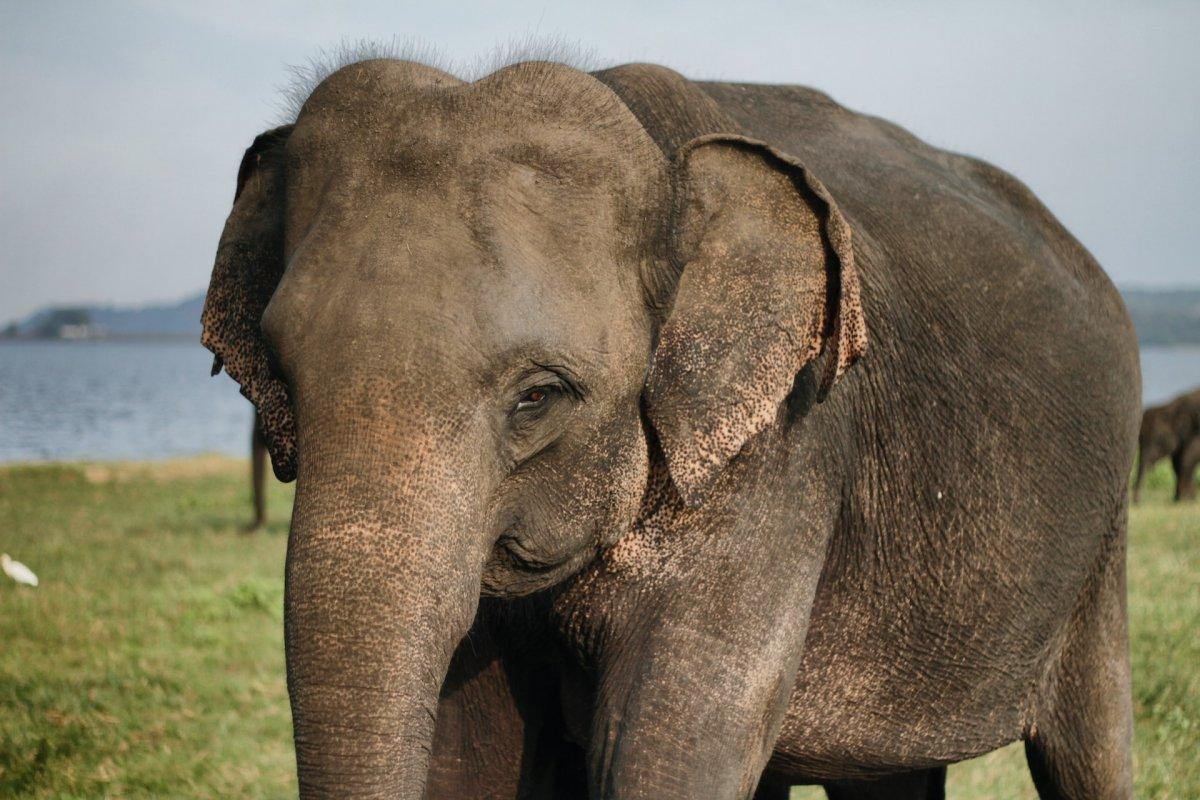
- Name: Sri Lankan elephant
- Scientific name: Elephas maximus maximus
- Conservation status:
The Sri Lankan elephant is one of three subspecies of the Asian elephant, and it is the largest of them all. It is native to the island of Sri Lanka, where it is mostly restricted to the dry zone in the north, east, and southeast of the country.
This elephant can be spotted in Lunugamvehera National Park, Wilpattu National Park, Udawalawe National Park, Minneriya National Park, and Yala National Park. Conflicts with humans are on the rise because of urban expansion and permanent cultivation.
2. Sri Lankan junglefowl
- Name: Sri Lankan junglefowl
- Scientific name: Gallus lafayettii
- Conservation status:
The Sri Lankan junglefowl, also known as the Lafayette’s junglefowl or the Ceylon junglefowl, is a species of bird endemic to Sri Lanka. It is the national bird of the country and is closely related to the more famous red junglefowl.
This bird inhabits scrub and forest areas, where it is very common. It can easily be sighted at Yala, Sinharaja, and Kitulgala, and lives from sea level up to altitudes of 2,000 m / 6,500 ft.
3. Mugger crocodile
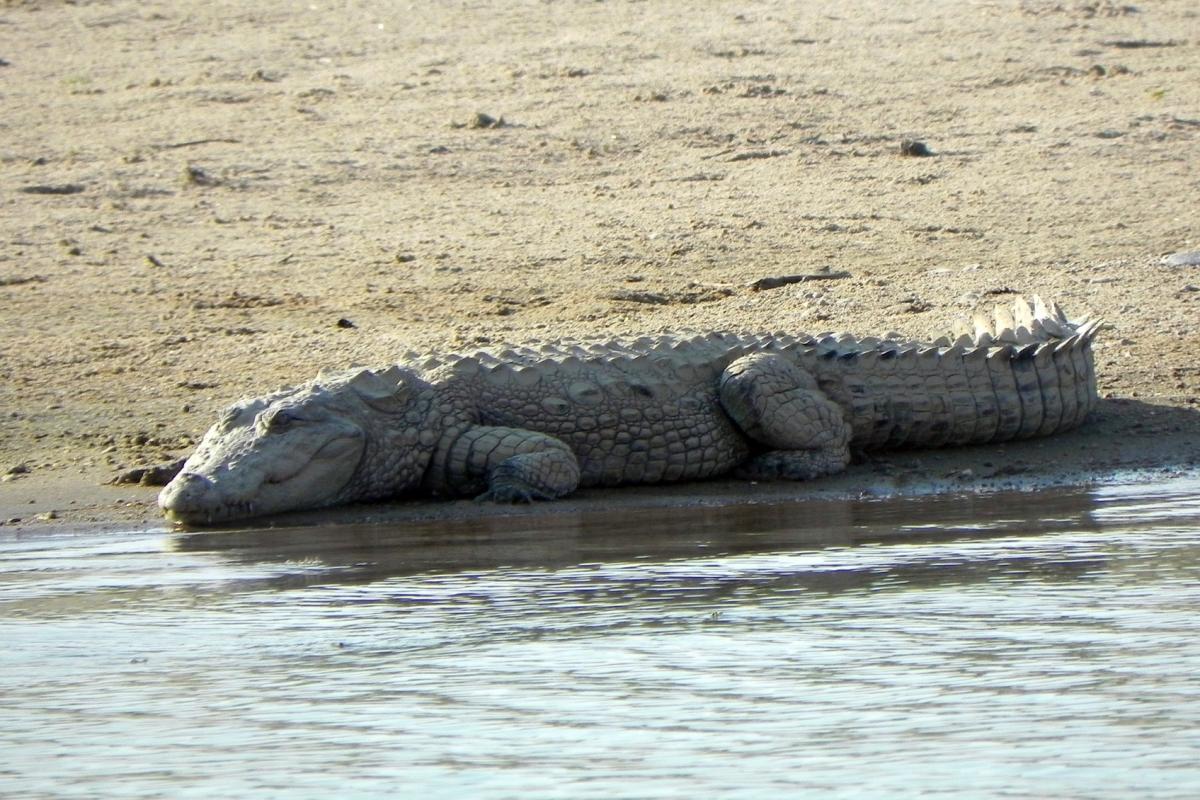
- Name: Mugger crocodile
- Scientific name: Crocodylus palustris
- Conservation status:
The mugger crocodile is the second-largest reptile in Sri Lanka. Also known as the marsh crocodile or simply the mugger, it is a medium-sized species of crocodilian native to freshwater habitats from southern Iran to the Indian subcontinent and Sri Lanka.
This crocodile lives in lakes, rivers, marshes, and artificial ponds, and is an adept swimmer. It has been considered vulnerable to extinction since 1982, primarily due to habitat conversion, entanglement in fishing nets, traffic accidents, and conflict with humans.
4. Purple-faced langur
- Name: Purple-faced langur
- Scientific name: Semnopithecus vetulus
- Conservation status:
The purple-faced langur, also known as the purple-faced leaf monkey, is a species of Old World monkey endemic to Sri Lanka. It is exclusively arboreal and has a particularly long tail, used for balance.
While it used to be abundant in areas around Colombo and in the wet zones of the country, its population has significantly declined because of rapid urban expansion. Locally, this monkey is called the “Sri Lanka black monkey”.
5. Grizzled giant squirrel
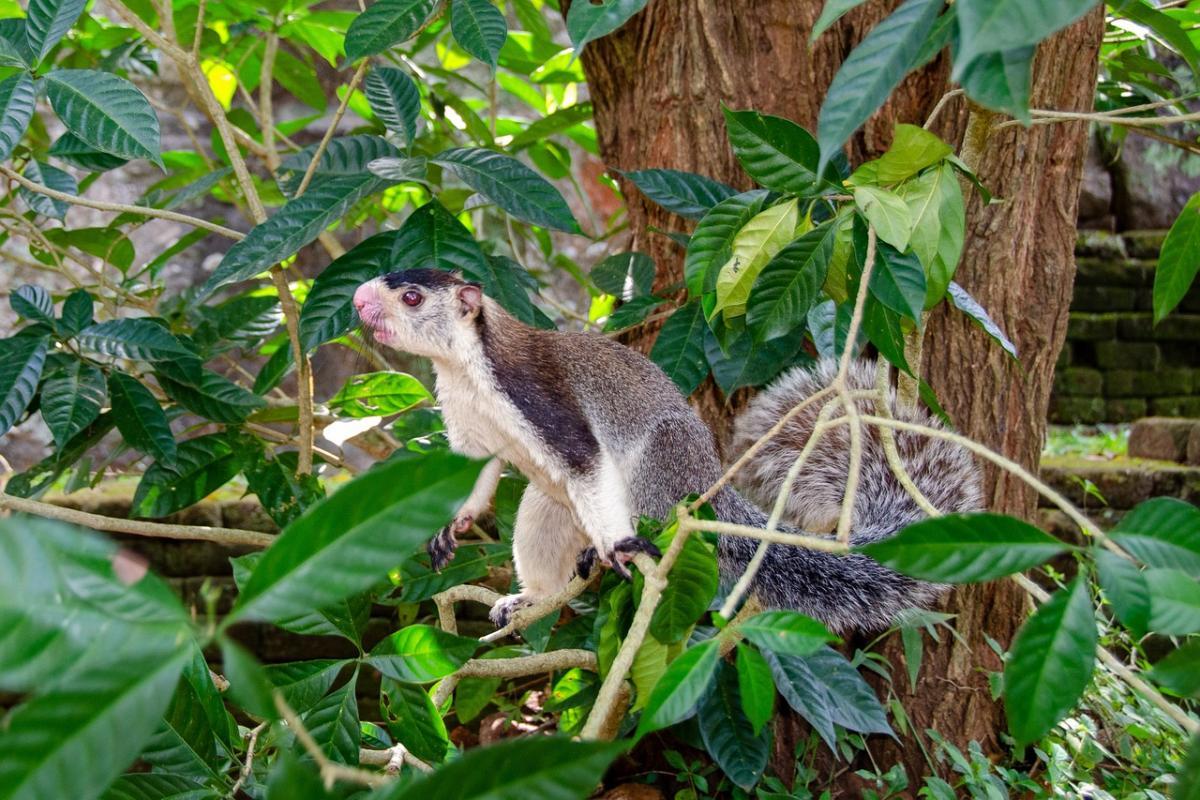
- Name: Grizzled giant squirrel
- Scientific name: Ratufa macroura
- Conservation status:
The grizzled giant squirrel is a large species of tree squirrel native to Sri Lanka and southern India. It is one of the unofficial national animals of the country, but it is considered near threatened with extinction because of hunting and habitat loss.
This squirrel is omnivorous and feeds on multitudes of animal and plant food sources such as bird eggs, nuts, insects, fruits, and even bark. Outside of predator attacks, potential intruders, and mating season, the grizzled giant squirrel never comes to the ground.
6. Golden palm civet
- Name: Golden palm civet
- Scientific name: Paradoxurus zeylonensis
- Conservation status:
The golden palm civet is a species of civet endemic to Sri Lanka. Although listed as least concern, its distribution is particularly fragmented, and the quality of its habitat is on the decline.
This mammal inhabits the montane evergreen forests, the dense monsoon forests, and the lowland rainforests of Sri Lanka, and it feeds on fruits, invertebrates, small vertebrates, and berries. It is a solitary, nocturnal, and arboreal animal, making it very difficult to spot.
7. Red slender loris
- Name: Red slender loris
- Scientific name: Loris tardigradus
- Conservation status:
The red slender loris is a small species of primate endemic to Sri Lanka. It is nocturnal and inhabits lowland rainforests, up to 700 m / 2,300 ft in altitude. One of the few remaining red slender loris populations is located in Masmullah Proposed Forest Reserve.
Not much is known about this primate, and its numbers are very poorly known. If there are, as suggested, only about 100 of these animals, this species would be one of the top 5 most threatened primates on the planet.
8. Layard’s palm squirrel
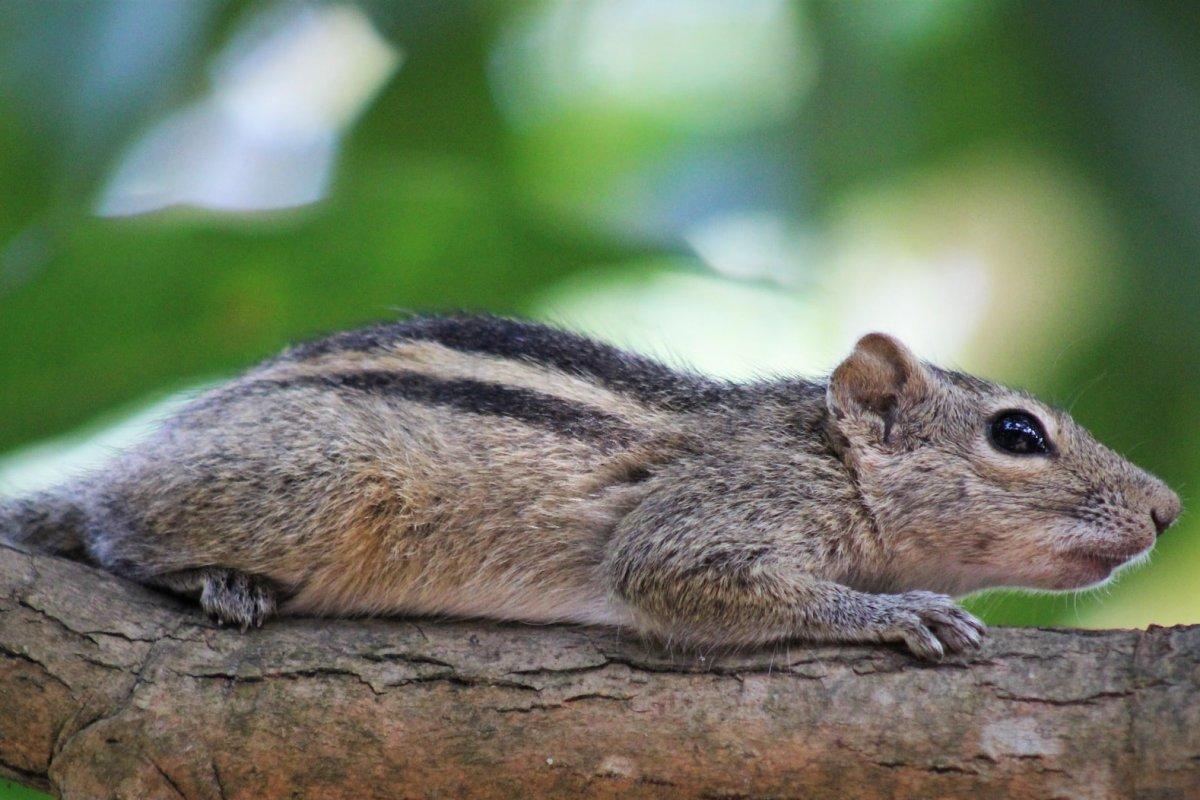
- Name: Layard’s palm squirrel
- Scientific name: Funambulus layardi
- Conservation status:
Layard’s palm squirrel, also known as the flame-striped jungle squirrel, is a species of rodent endemic to Sri Lanka. Even within the country, which is already relatively small, its range is very restricted, being only found in the central highlands.
This squirrel has a particularly large, bushy tail and short and soft fur. It inhabits subtropical and tropical moist montane forests, as well as tropical moist lowlands forests, and feeds on fruits, nuts, shoots, and insects.
9. Toque macaque
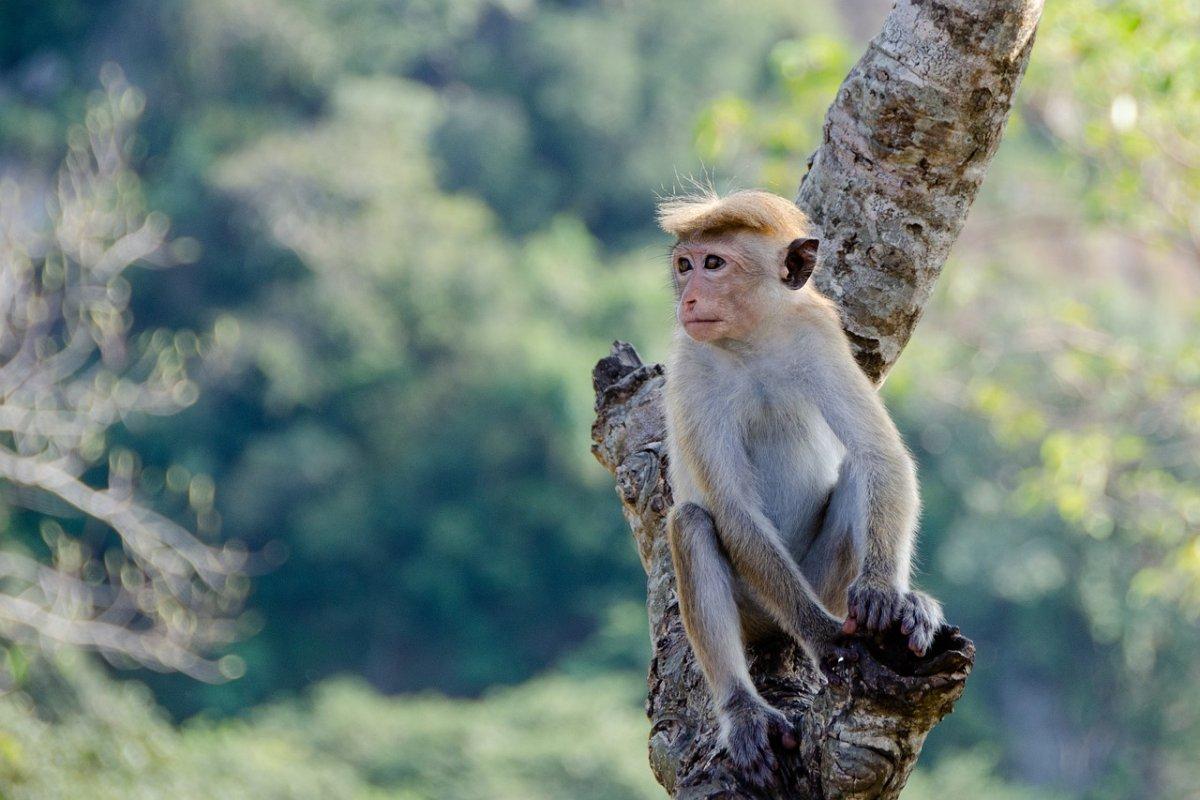
- Name: Toque macaque
- Scientific name: Macaca sinica
- Conservation status:
The toque macaque is a species of Old World monkey endemic to Sri Lanka, where it is called either “rilawa” or “rilewa”. It was named after its hair, which looks like a toque cap.
There are 3 subspecies of this monkey within Sri Lanka, and they can mostly be found in the central parts of the country. The toque macaque lives in troops with strict dominance hierarchies, both among males and females.
10. Sri Lankan leopard
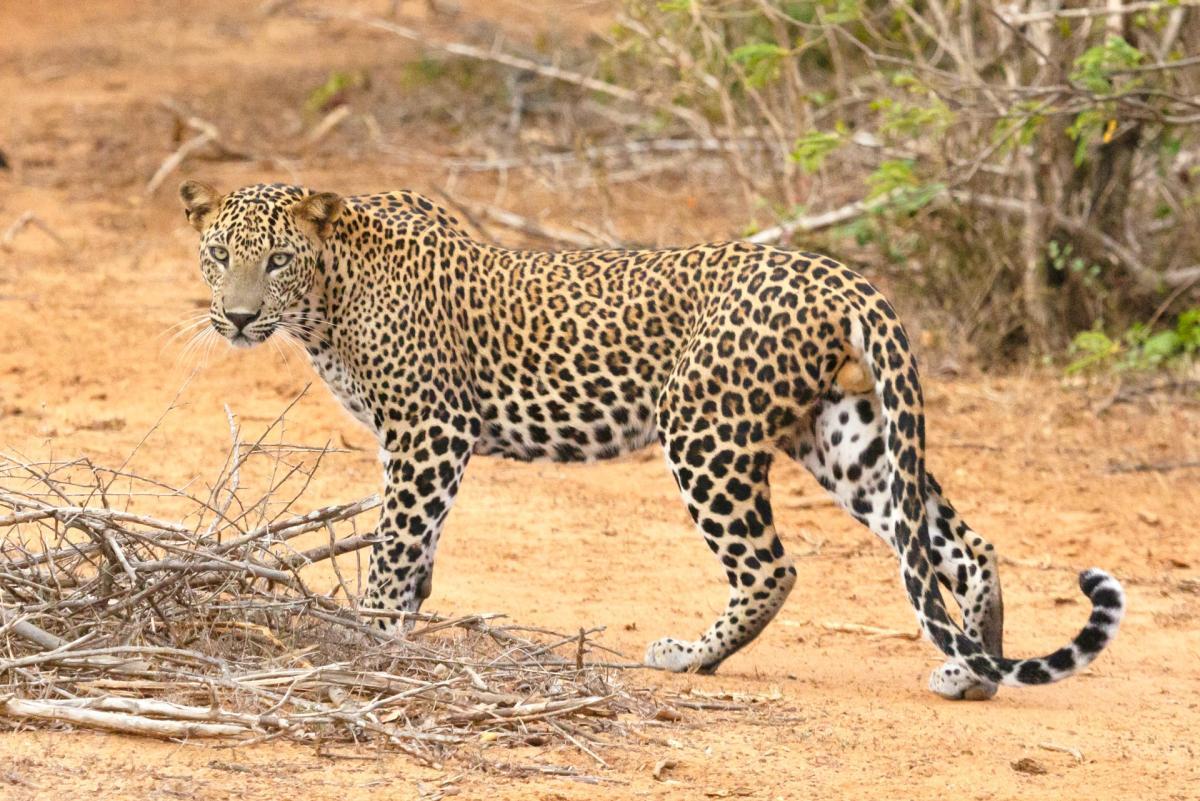
- Name: Sri Lankan leopard
- Scientific name: Panthera pardus kotiya
- Conservation status:
The Sri Lankan leopard is a subspecies of leopard native to Sri Lanka. It has been considered vulnerable to extinction since 2020, and its low numbers of about 800 individuals are still declining.
This leopard hunts by stalking its prey, and it feeds on small to large mammals, birds, and reptiles. Compared to other areas of Sri Lanka, it is particularly abundant in Yala National Park, where it is solitary.
11. Sri Lankan sloth bear
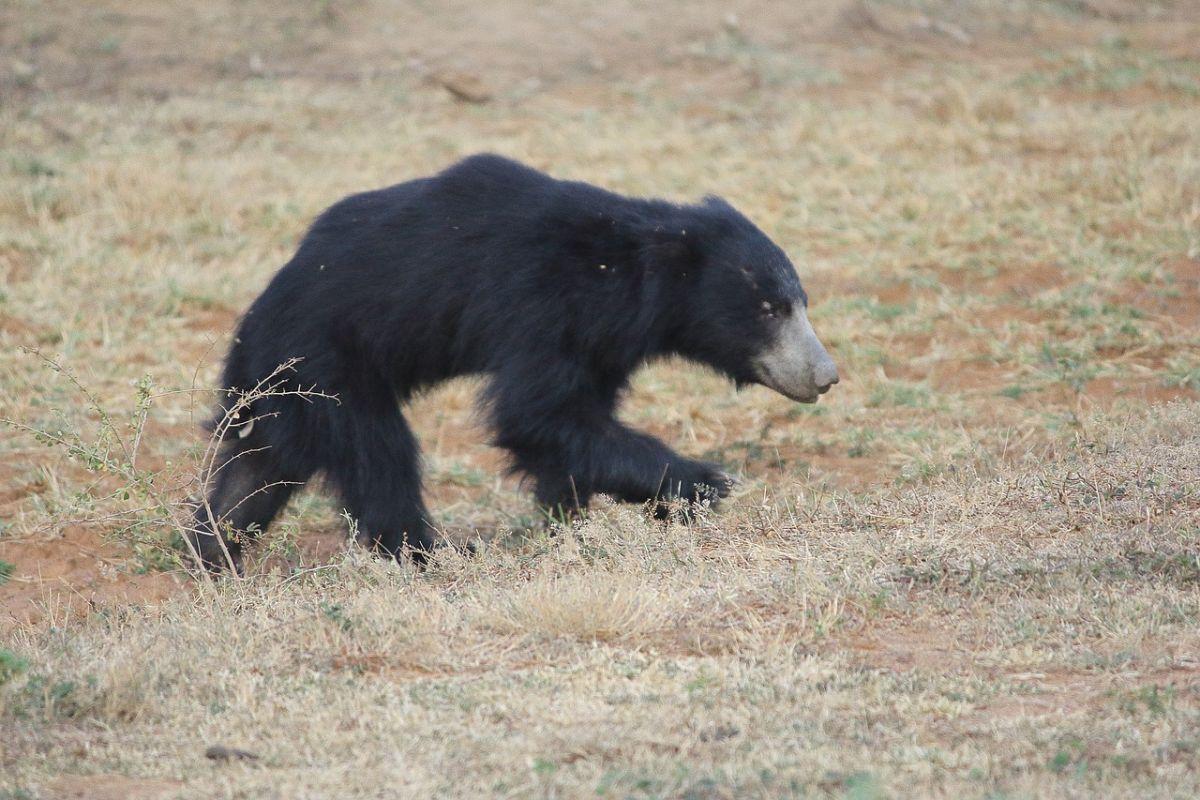
- Name: Sri Lankan sloth bear
- Scientific name: Melursus ursinus inornatus
- Conservation status:
The Sri Lankan sloth bear is another large mammal found in the country, and it shares most of its range with the Sri Lankan leopard. It inhabits lowland dry forests and is an omnivorous bear that feeds on berries, roots, and nuts, but also meat and carrion.
This bear is seriously threatened, with only fewer than 1,000 specimens left (and a wild population of about 500). The main reasons for that are habitat destruction (this bear highly relies on natural forests for its food sources) as well as persecution after livestock loss, damage to property, and attacks on humans. Because of this, it is feared in Sri Lanka.
12. Pygmy blue whale
- Name: Pygmy blue whale
- Scientific name: Balaenoptera musculus brevicauda
- Conservation status:
The pygmy blue whale is a subspecies of the blue whale. Contrary to its gigantic counterpart, it can only be found in the Indian Ocean and the southern Pacific Ocean. Despite being named “pygmy”, it still remains an extremely large animal, reaching up to 24 m / 79 ft in length!
There are several physical differences between the pygmy blue whale and the blue whale, such as a larger head relative to its body size, a heavier body weight (compared to other blue whales of the same length), and a shorter tail.
13. Indian pangolin
- Name: Indian pangolin
- Scientific name: Manis crassicaudata
- Conservation status:
The Indian pangolin, also known as the scaly anteater or the thick-tailed pangolin, is a species of mammal native to the Indian subcontinent. It is part of the pangolin family, one of the most endangered groups of animals on the planet.
This mammal is covered in protective scales and can curl itself into a defensive ball, which is extremely efficient against most natural predators, except for its main threat: humans. This pangolin is extremely threatened by poaching for consumption and capture for the illegal wildlife trade.
14. Indian crested porcupine
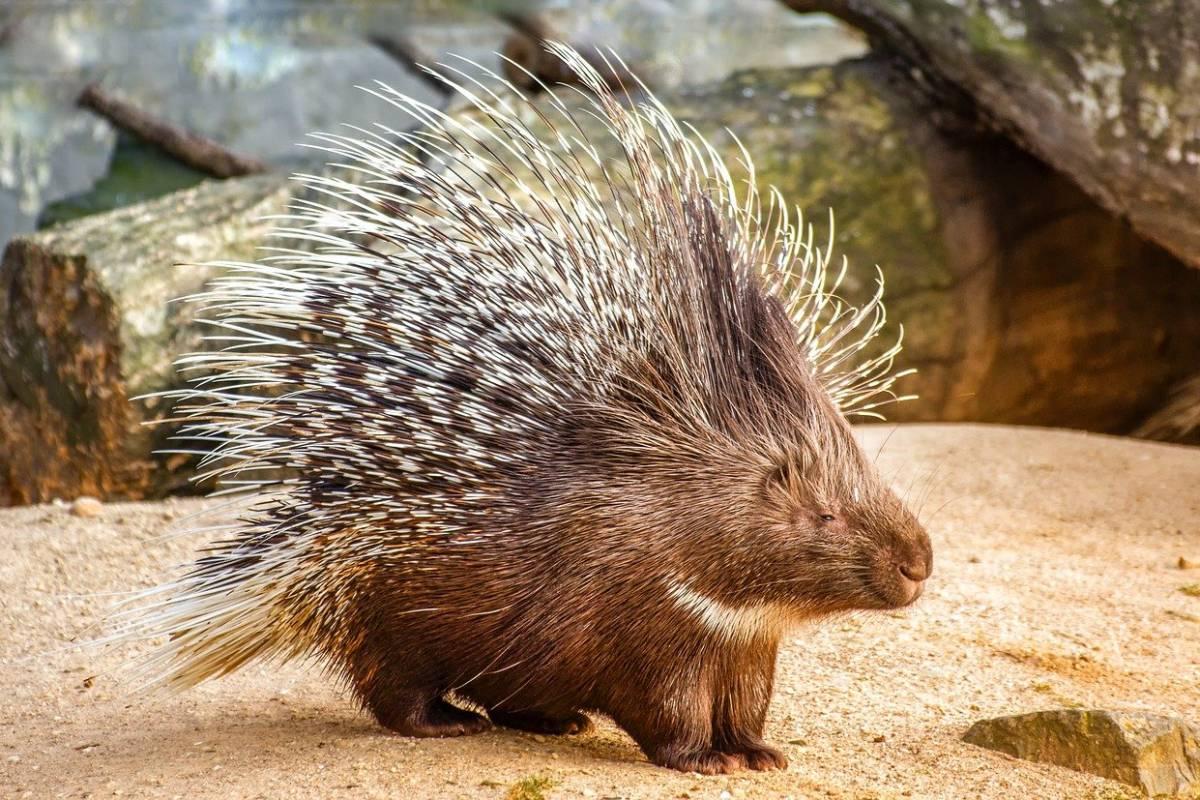
- Name: Indian crested porcupine
- Scientific name: Hystrix indica
- Conservation status:
The Indian crested porcupine is a species of Old World porcupine native to the Middle East and southern Asia. It is a large rodent, weighing as much as 18 kg / 40 lb, and is covered in multiple layers of quills of various lengths.
This porcupine has a very wide, but mostly herbivorous diet: it feeds on roots, bulbs, grains, tubers, and fruits, but also insects and small vertebrates. It is also known for its tendency to chew on bones which accelerates and helps quill growth.
15. Indian cobra
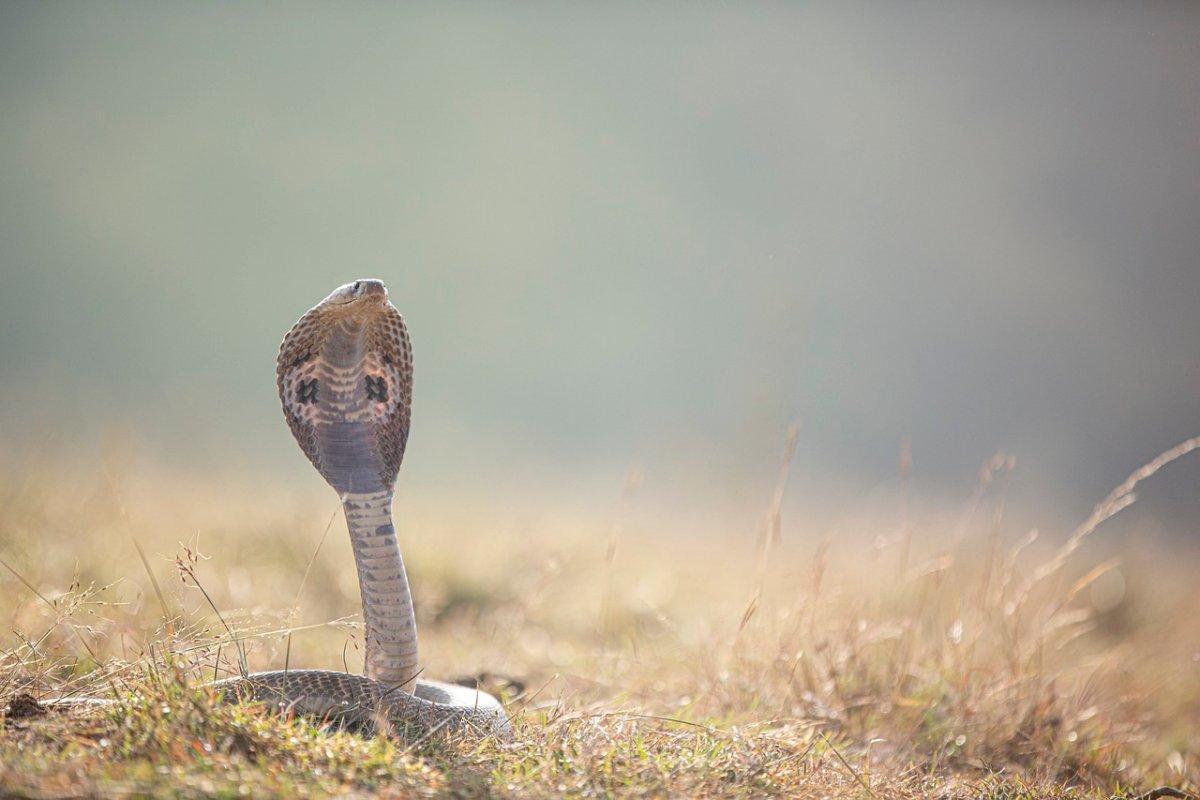
- Name: Indian cobra
- Scientific name: Naja naja
- Conservation status:
The Indian cobra, also known as the binocellate cobra, the spectacled cobra, or the Asian cobra, is a species of cobra found in Sri Lanka, India, Pakistan, Bhutan, and Nepal. It is one of the big four species that inflict the most snakebites on humans in India and plays an important role in Indian culture and mythology.
Sri Lanka has some of the longest Indian cobras, with some specimens reaching 2.2 m / 7.2 ft, although they are pretty rare.
16. Indian chameleon
- Name: Indian chameleon
- Scientific name: Chamaeleo zeylanicus
- Conservation status:
The Indian chameleon is a species of chameleon found in Sri Lanka, India, and other areas of southern Asia. Similarly to other chameleons, it has a long, sticky tongue and independent eye movement.
Chameleons are known for their spectacular ability to rapidly change body color, usually for communication with other specimens or control of their body temperature, since darker colors absorb more heat. It feeds on insects such as flies.
17. Saltwater crocodile
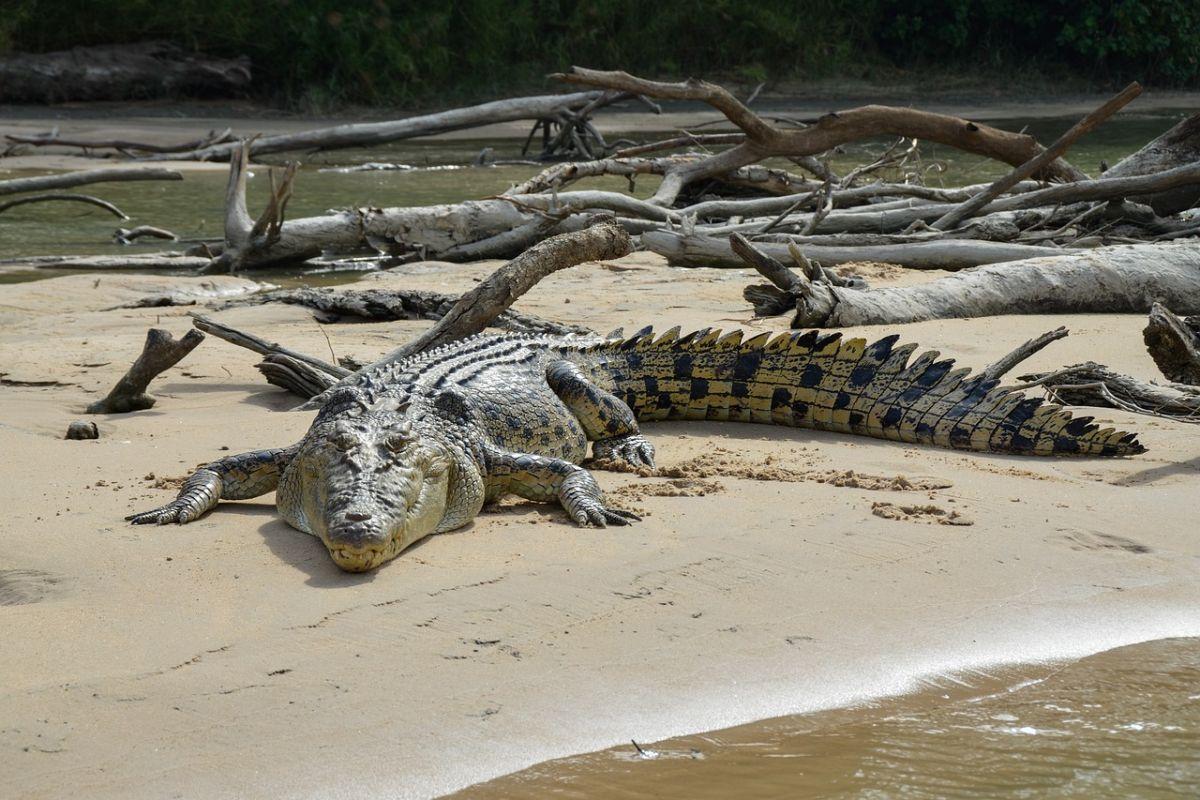
- Name: Saltwater crocodile
- Scientific name: Crocodylus porosus
- Conservation status:
The saltwater crocodile, also known as the Indo-Pacific crocodile, the sea crocodile, the marine crocodile, or the estuarine crocodile, is not only the largest reptile in Sri Lanka but also in the entire world: this spectacular beast can reach more than 6.3 m / 21 ft in length and weigh as much as 1,300 kg / 2,900 lb!
This reptile is known for killing humans, and it is particularly dangerous. It is a hypercarnivorous, ambush and apex predator that can feed on anything within its range, even sharks.
18. Indian star tortoise
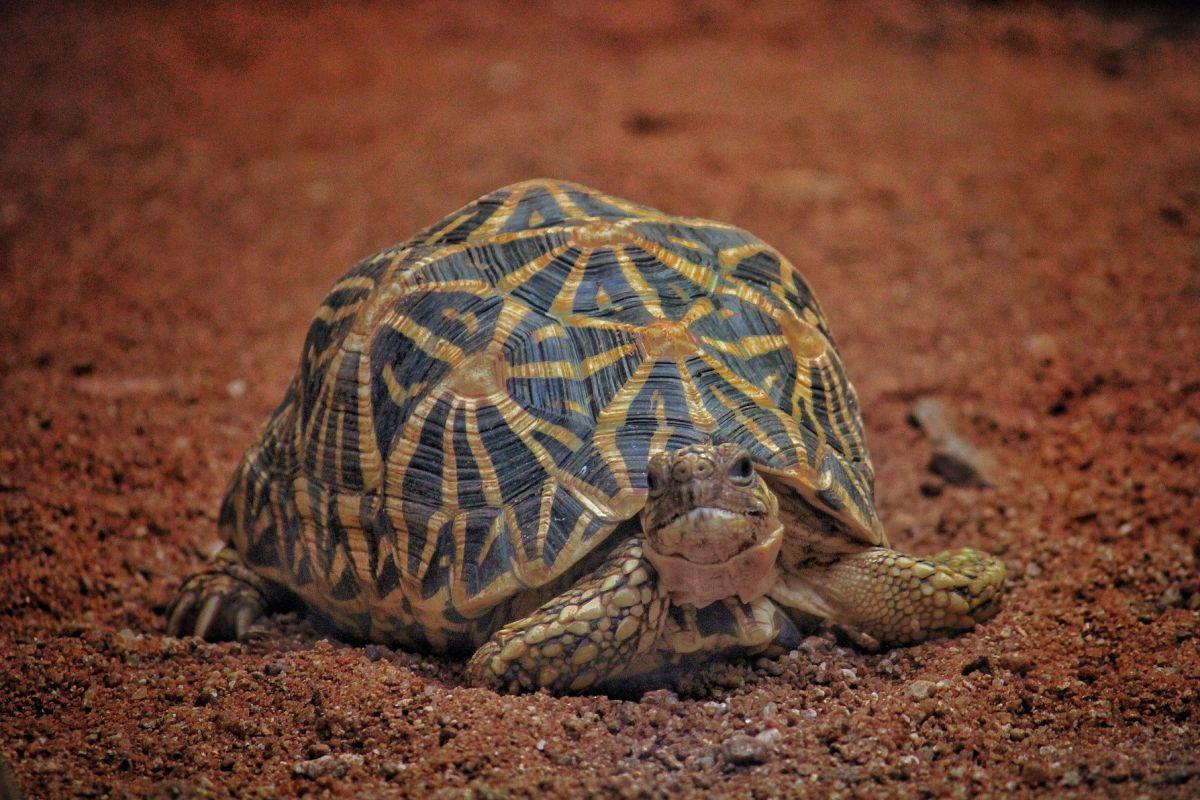
- Name: Indian star tortoise
- Scientific name: Geochelone elegans
- Conservation status:
The Indian star tortoise is a species of tortoise native to Sri Lanka, India, and Pakistan. While it is globally considered vulnerable to extinction, its Sri Lankan classification is Least concern.
There are more than 10,000 Indian star tortoises in the world, but their population is on the decline, which is mainly due to poaching for the illegal wildlife trade and habitat loss. This tortoise can be found all around Sri Lanka, and feeds on fallen fruit, flowers, leaves, and grasses; occasionally, some specimens were also seen eating carrion.
19. Sri Lankan axis deer
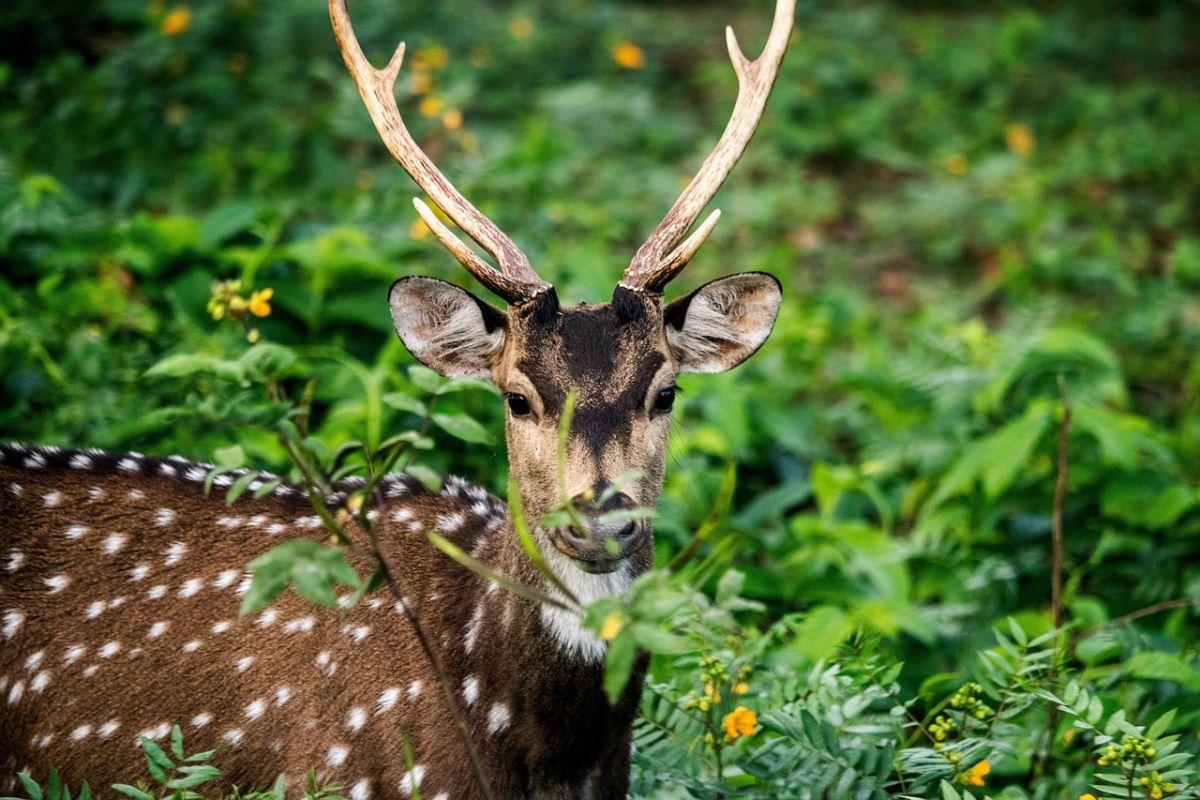
- Name: Sri Lankan axis deer
- Scientific name: Axis axis ceylonensis
- Conservation status:
The Sri Lankan axis deer, also known as the Ceylon spotted deer, is a subspecies of the axis deer endemic to Sri Lanka. It is active during the early morning and in the evening, and can commonly be seen near waterholes. It feeds on grasses, as well as leaves and fallen fruit, and closely coexists with other species of deer langurs, wild buffalos, and peacocks.
This deer is one of the main prey of the Sri Lankan leopard and is also hunted by crocodiles, jackals, and sloth bears.
20. Bengal monitor
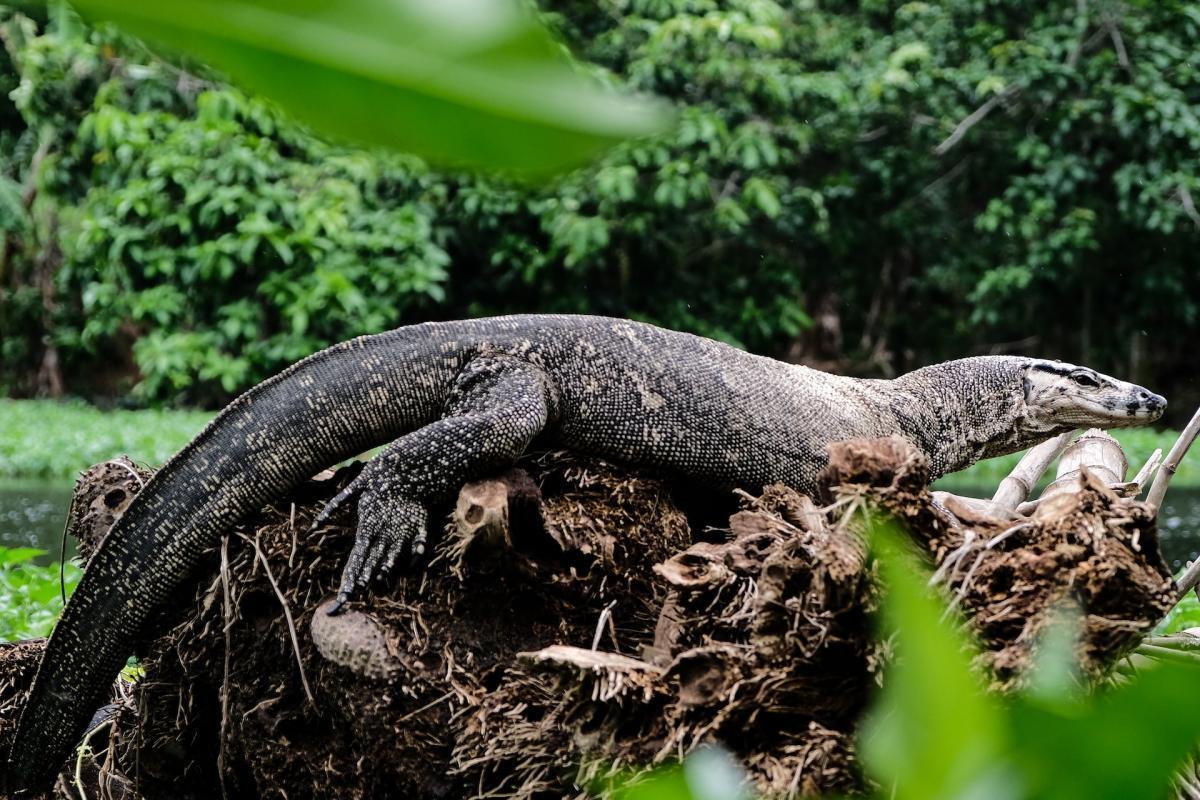
- Name: Bengal monitor
- Scientific name: Varanus bengalensis
- Conservation status:
The Bengal monitor, also known as the common Indian monitor, is a large species of monitor lizard with a wide distribution across the Indian subcontinent, as well as southeastern and western Asia. It is primarily terrestrial, but younglings are usually more arboreal.
This monitor lizard feeds on arthropods, eggs, fish, and ground birds, and it is not particularly threatened by any natural predators outside of humans, except for young individuals, which are much more vulnerable.
21. Sri Lankan green pit viper
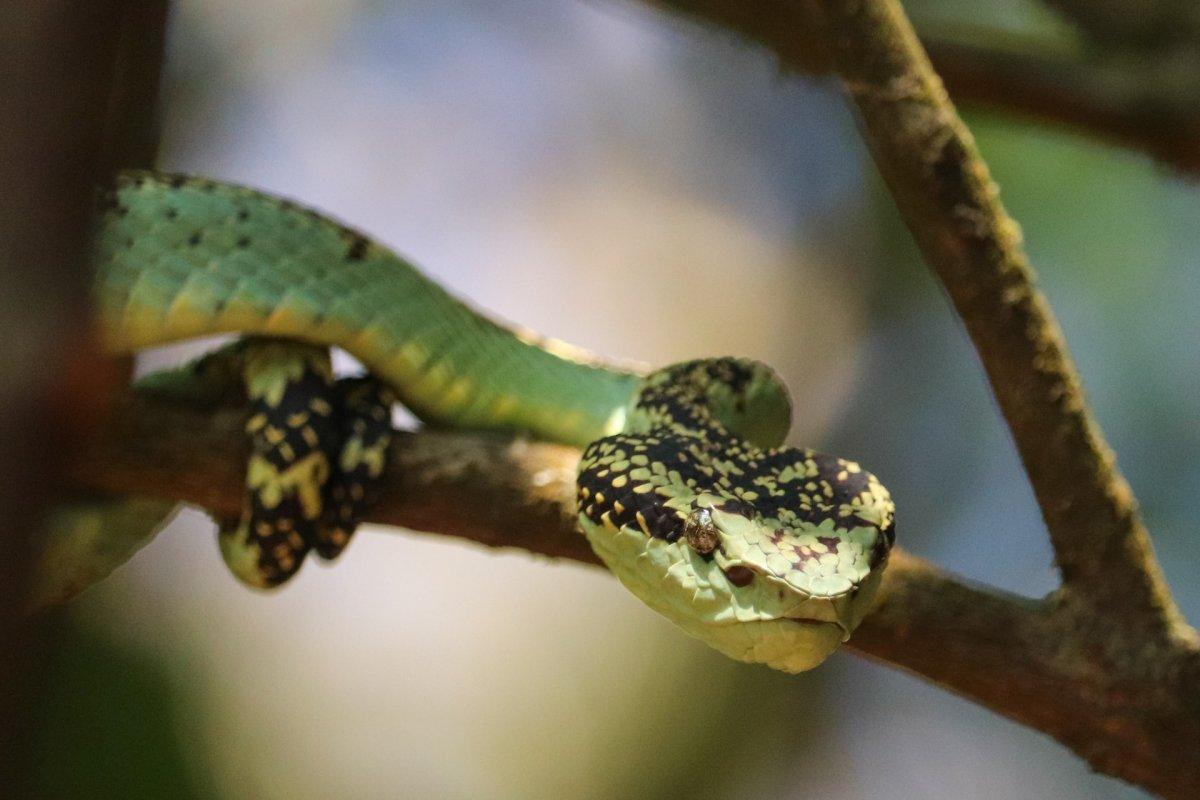
- Name: Sri Lankan green pit viper
- Scientific name: Craspedocephalus trigonocephalus
- Conservation status:
The Sri Lankan green pit viper, also known as the Sri Lankan pit viper or the Ceylon pit viper, is a venomous species of pit viper endemic to Sri Lanka. It gives birth to 5 to 25 young at once, and inhabits all of Sri Lanka, except its most arid and highest zones.
This pit viper can sometimes be sighted around plantations of cocoa, cardamom, tea, and coffee, at altitudes of up to 1,800 m / 5,900 ft.
—
So there you have them, these were my 21 endemic animals of Sri Lanka. I hope you enjoyed this list and that you learned something new today.
In case you want to learn more about Sri Lankan wildlife, feel free to keep reading, as I still have lots of things to tell you about:
Endangered Animals of Sri Lanka
This is definitely the saddest part of the list, but it is very important to raise awareness. Because of this, let’s go through the list of endangered animals in Sri Lanka.
Here are the animals in danger of extinction in Sri Lanka.
- Gunther’s streamlined frog
- Sharp-nosed bush frog
- Whitenose bubble-nest frog
- Variable bush frog
- Pseudophilautus pardus
- and 13 more…
- Bandula barb
- Stuart’s shrub frog
- Christmas Island frigatebird
- Green sawfish
- Eranga Virag’s sieldtail snake
- and 82 more…
- Purple-faced langur
- Asian elephant
- Blotched filamented barb
- Java sparrow
- Horton plains shrub frog
- and 169 more…
To see the full list of endangered species in Sri Lanka, head over to the International Union for Conservation of Nature’s Red List.
What is the National Animal of Sri Lanka?
The national animal of Sri Lanka is the elephant, but also the lion, and the grizzled giant squirrel.
Similarly to several other Asian countries, Sri Lanka is represented by the Asian elephant, the largest terrestrial animal on the continent.
However, there is no consensus on the country’s national animal, and the Asiatic lion as well as the grizzled giant squirrel also represent Sri Lanka. The lion has always been celebrated by the Sinhalese people, as it symbolizes heraldry, and there was the Sri Lankan lion during prehistoric times. The grizzled giant squirrel is a large species of tree squirrel found in the Central and Uva provinces of the country; it is locally known as “Dandu Lena”.
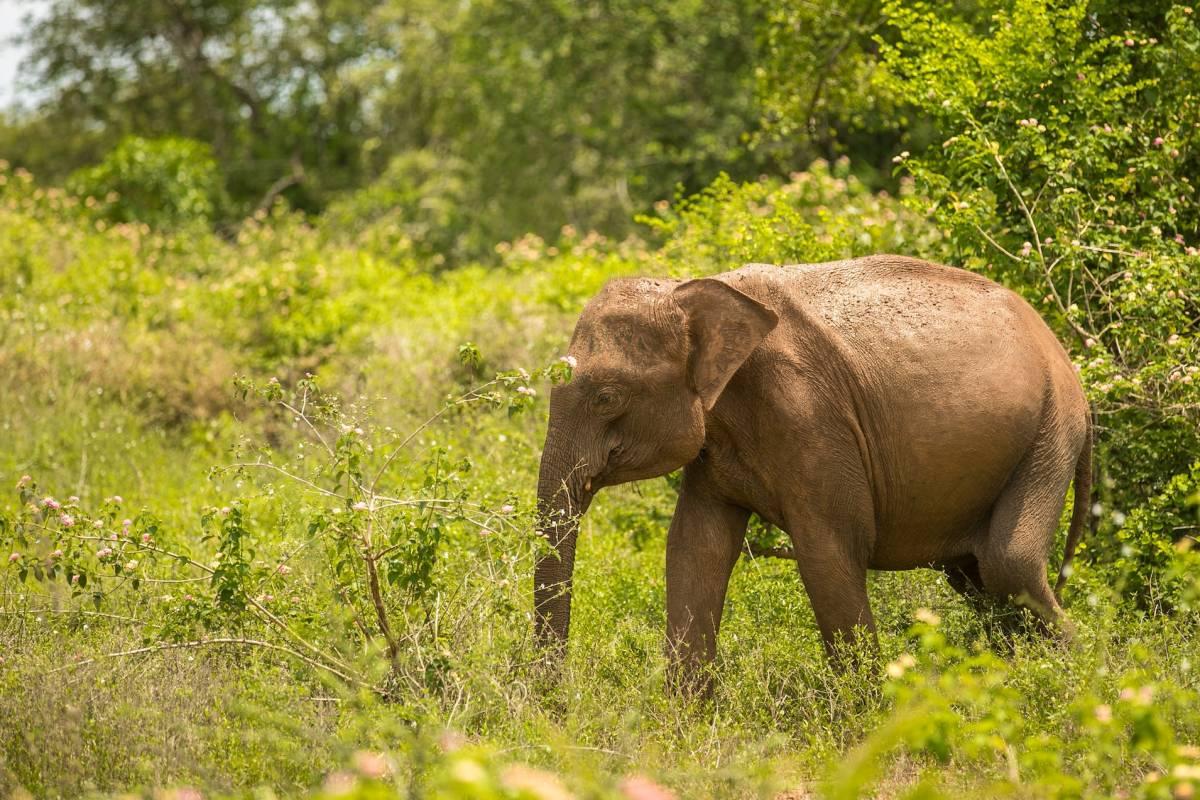
How Many Animals Native to Sri Lanka?
What is the diversity of native animals in Sri Lanka?
Let’s look at the total number of species of Chordata (mammals, birds, fishes, and reptiles).
Total number of animal species in Sri Lanka: 2,409 (15,319 in total in South and Southeast Asia)
More About Animals in the World!
Loved these Sri Lanka wildlife facts? Want to see what animals live in other countries?
Then check out these posts:
Or click here to see ALL the facts up on the blog! Spoiler alert: there’s A LOT of them.
Share the knowledge! Click on the buttons below to share information about these endemic animals in Sri Lanka with your friends, and help them learn more about the world 🙂
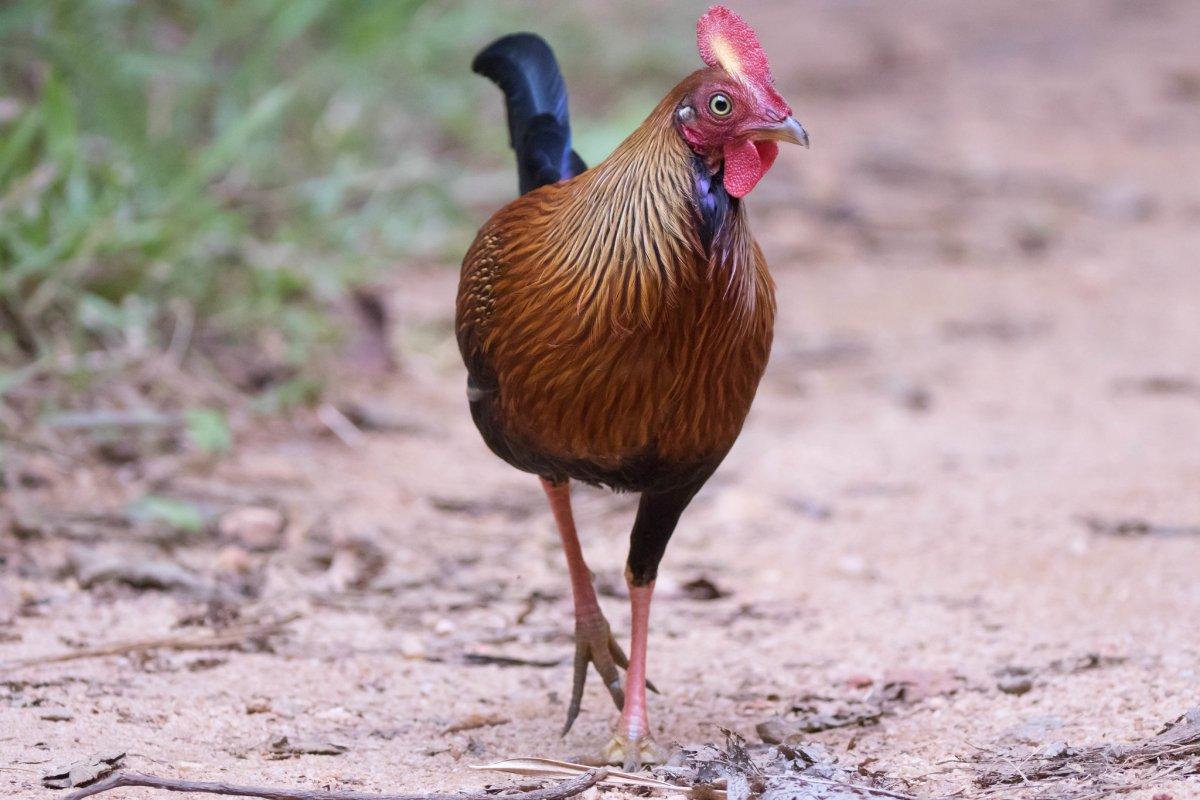
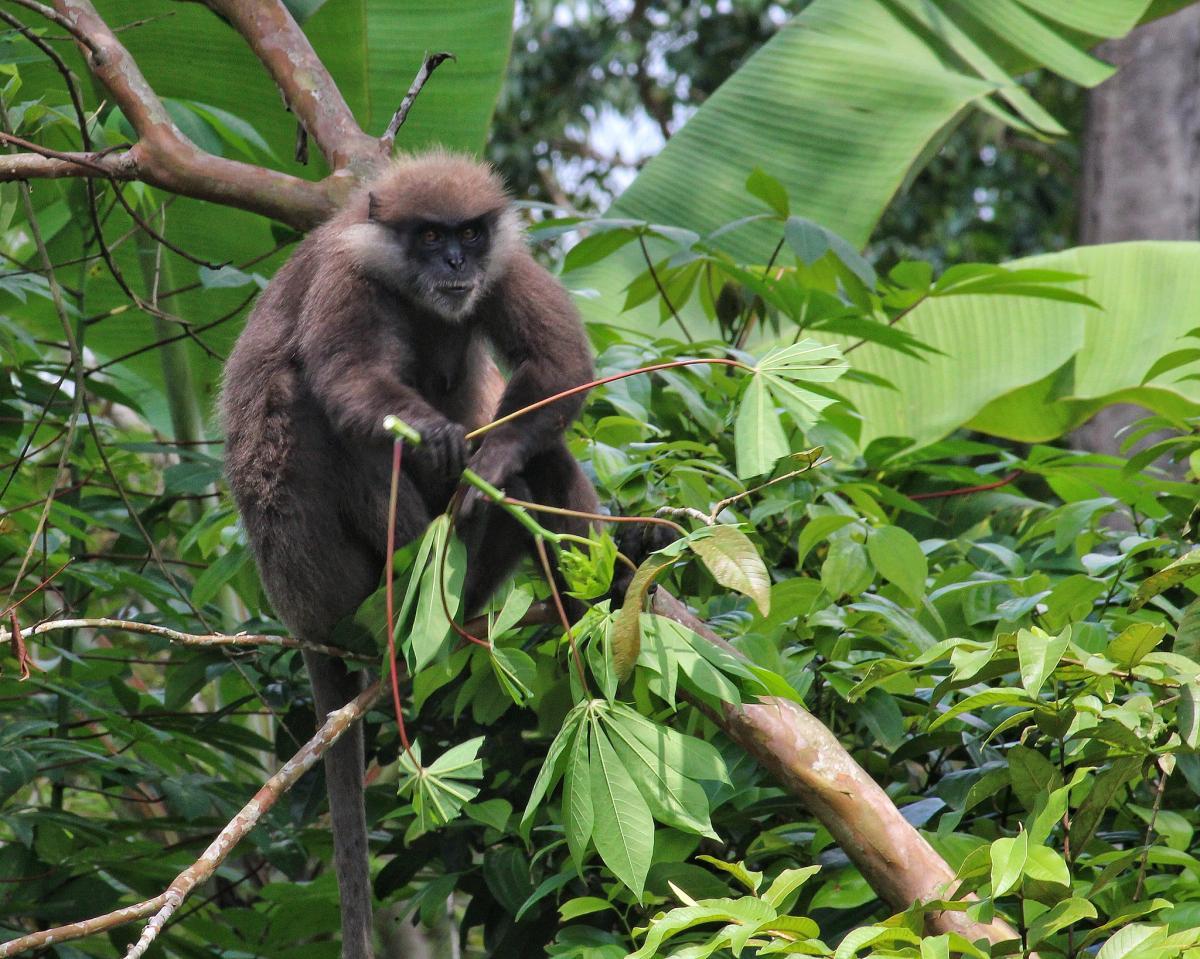
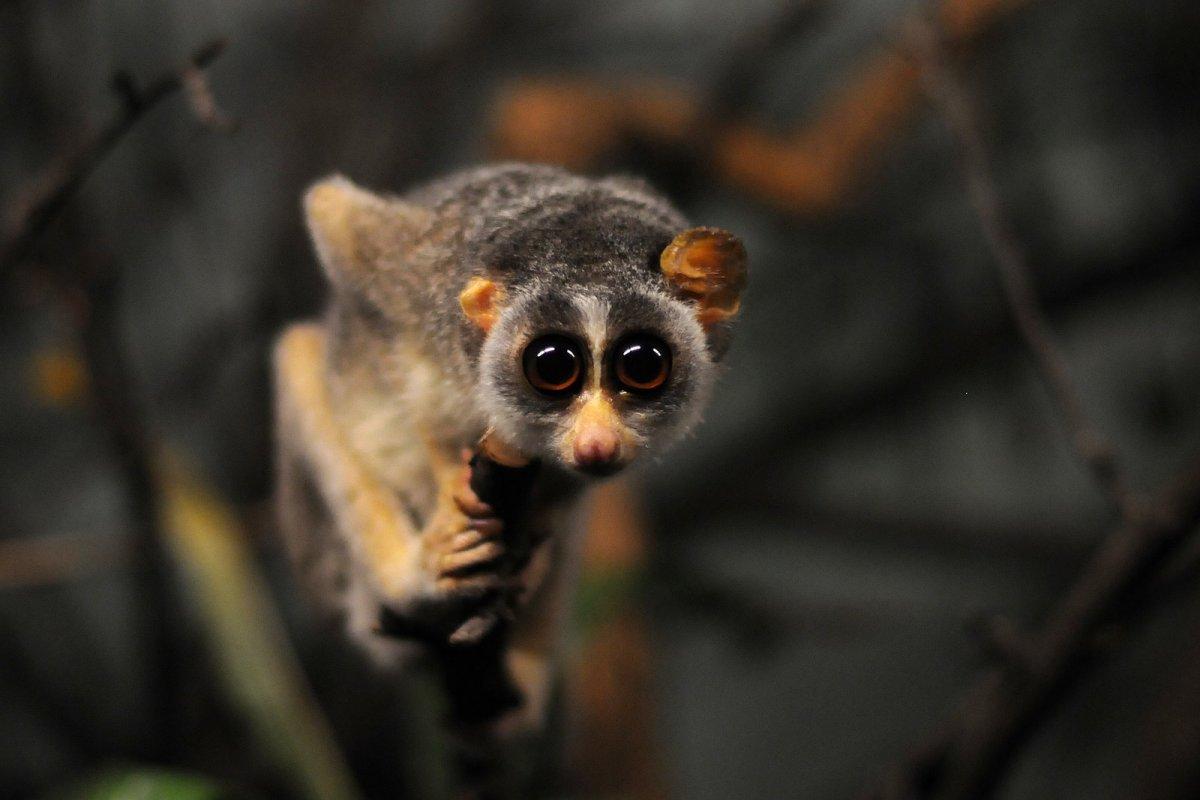
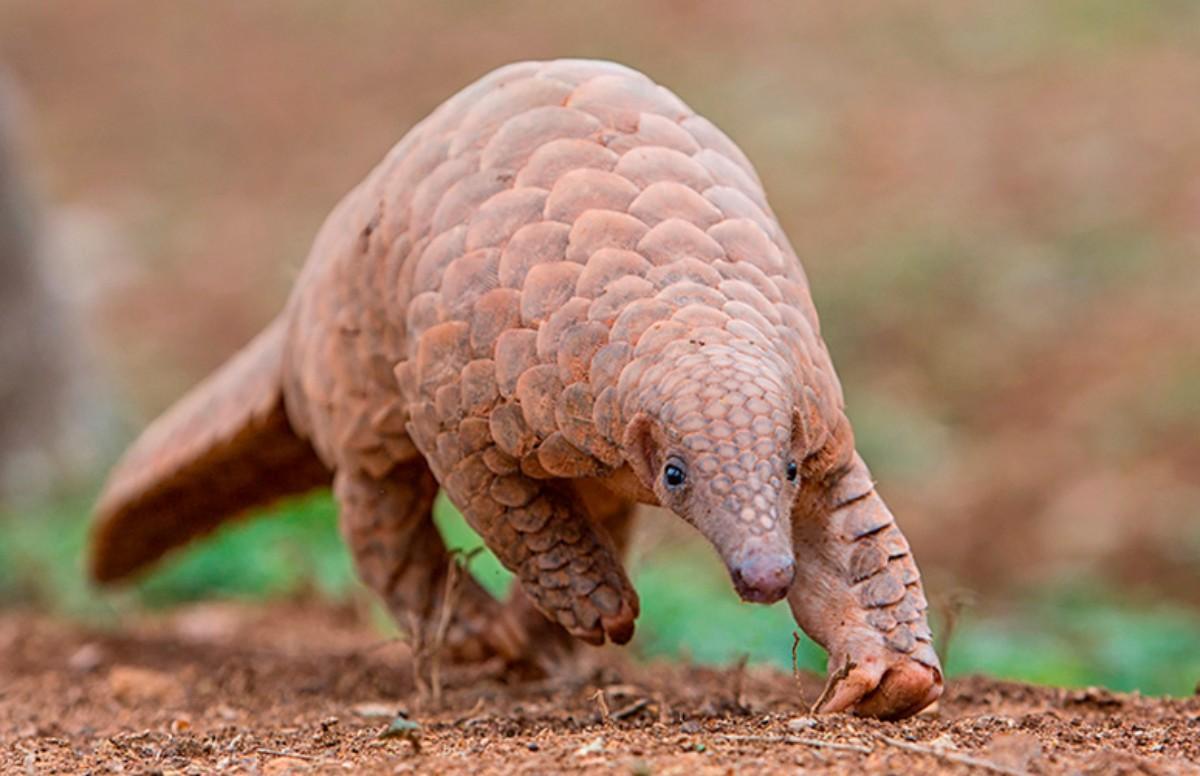
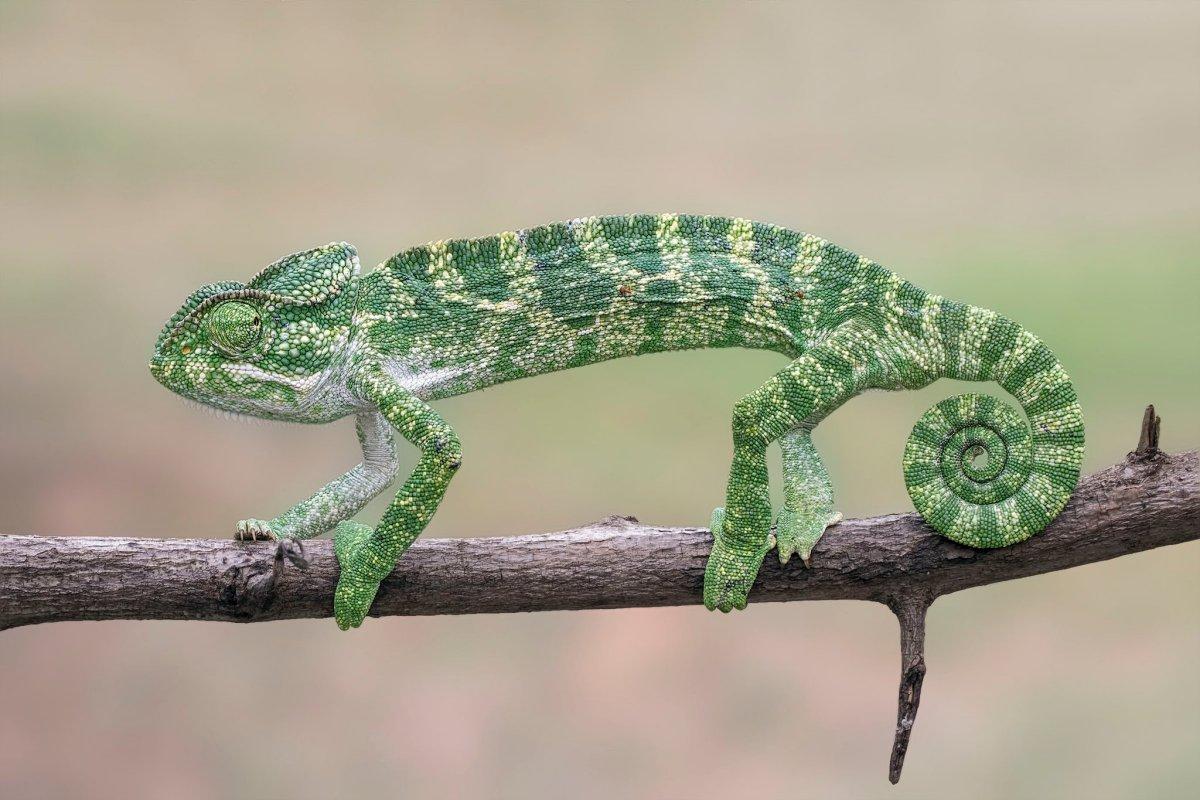

![27 Wild Animals in Uruguay [Wildlife in Uruguay]](https://www.kevmrc.com/wp-content/uploads/2022/08/27-wild-animals-in-uruguay.jpg)
![24 Wild Animals in Zimbabwe [Wildlife in Zimbabwe]](https://www.kevmrc.com/wp-content/uploads/2022/11/24-wild-animals-in-zimbabwe.jpg)
![13 Wild Animals in Togo [Wildlife in Togo]](https://www.kevmrc.com/wp-content/uploads/2022/12/13-wild-animals-in-togo.jpg)